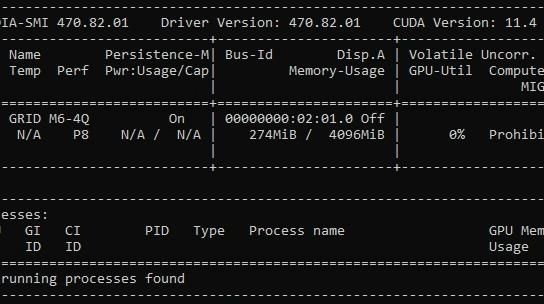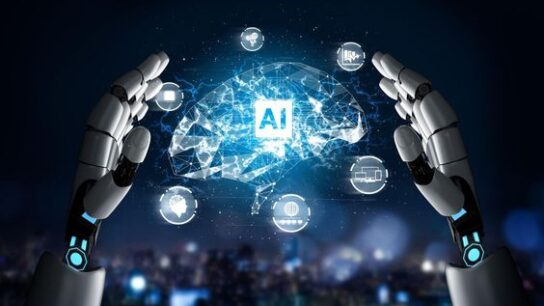Artificial Intelligence (AI) and Machine Learning (ML) are two of the most transformative technologies of our time. They are driving innovations across various sectors, including healthcare, finance, education, and beyond. In this blog post, we will delve into the world of AI machine learning, exploring its fundamentals, applications, benefits, and future prospects. Whether you’re a tech enthusiast, a student, or a professional looking to understand these technologies better, this guide will provide you with a thorough overview.

Table of Contents
What is AI Machine Learning?
AI machine learning combines two powerful concepts: Artificial Intelligence (AI) and Machine Learning (ML).
- Artificial Intelligence (AI): AI refers to the simulation of human intelligence in machines that are programmed to think, learn, and make decisions like a human. AI systems can perform tasks that typically require human intelligence, such as recognizing speech, making decisions, and understanding natural language.
- Machine Learning (ML): ML is a subset of AI that focuses on building systems that learn from data. Instead of being explicitly programmed to perform a task, ML algorithms improve their performance over time by learning from data and experiences.
In essence, AI machine learning is the use of algorithms and statistical models to enable a system to learn from and make predictions or decisions based on data.
How Does AI Machine Learning Work?

The core of AI machine learning lies in its ability to analyze data, learn from it, and make predictions or decisions. Here’s a basic overview of how it works:
- Data Collection: The process begins with collecting relevant data. This data can come from various sources, including databases, sensors, or user interactions.
- Data Preparation: The collected data is cleaned and preprocessed to ensure it is accurate and suitable for analysis. This step may involve handling missing values, normalizing data, and transforming features.
- Model Selection: Choosing the right ML model is crucial. Depending on the task—be it classification, regression, clustering, or reinforcement learning—different models are used.
- Training: During the training phase, the selected model is fed the prepared data. The model learns patterns and relationships within the data through iterative adjustments.
- Evaluation: After training, the model is evaluated to determine its accuracy and effectiveness. This is done using a separate dataset not seen by the model during training.
- Prediction and Deployment: Once the model is trained and evaluated, it can be used to make predictions or decisions based on new data. The model is then deployed in a real-world application where it continues to learn and adapt.
Key Concepts in AI Machine Learning

1. Supervised Learning
Supervised learning is a type of AI machine learning where the model is trained on labeled data. This means the input data is paired with the correct output, allowing the model to learn the relationship between them.
- Applications: Spam email detection, image recognition, and sentiment analysis.
- Examples: Linear regression, decision trees, and support vector machines.
2. Unsupervised Learning
Unsupervised learning involves training a model on data without explicit labels. The goal is to find hidden patterns or intrinsic structures within the data.
- Applications: Customer segmentation, anomaly detection, and recommendation systems.
- Examples: Clustering algorithms (e.g., k-means), principal component analysis (PCA), and hierarchical clustering.
3. Reinforcement Learning
Reinforcement learning (RL) is a type of AI machine learning where an agent learns to make decisions by receiving rewards or penalties. The agent learns through trial and error, optimizing its actions to maximize cumulative rewards.
- Applications: Game playing, robotics, and autonomous driving.
- Examples: Q-learning, deep Q-networks (DQN), and policy gradients.
4. Deep Learning
Deep learning is a subset of machine learning that uses neural networks with many layers (deep networks) to model complex patterns in large datasets.
- Applications: Speech recognition, image classification, and natural language processing.
- Examples: Convolutional neural networks (CNNs), recurrent neural networks (RNNs), and transformers.
Benefits of AI Machine Learning

1. Enhanced Efficiency
AI machine learning can automate repetitive tasks, analyze large volumes of data quickly, and make real-time decisions. This leads to significant improvements in efficiency and productivity across various industries.
2. Improved Accuracy
Machine learning algorithms can analyze data with high precision and accuracy. By learning from historical data, these algorithms can make predictions and decisions that are often more accurate than those made by humans.
3. Personalization
AI machine learning enables personalized experiences by analyzing user behavior and preferences. For instance, recommendation systems on platforms like Netflix and Amazon use ML to suggest content or products tailored to individual tastes.
4. Predictive Analytics
With AI machine learning, organizations can predict future trends and outcomes based on historical data. This capability is invaluable for making informed business decisions and strategic planning.
5. Innovation
Machine learning drives innovation by enabling new applications and services that were previously unimaginable. From self-driving cars to advanced healthcare diagnostics, the possibilities are vast.
Applications of AI Machine Learning

1. Healthcare
In healthcare, AI machine learning is used for diagnosing diseases, predicting patient outcomes, and personalizing treatment plans. ML algorithms can analyze medical images, genetic data, and patient records to support medical professionals in making accurate diagnoses and treatment decisions.
2. Finance
The finance industry leverages AI machine learning for various applications, including fraud detection, algorithmic trading, and risk assessment. ML models can analyze transaction patterns, detect anomalies, and optimize trading strategies to enhance financial operations.
3. Retail
In retail, AI machine learning is used for inventory management, customer segmentation, and recommendation systems. By analyzing sales data and customer behavior, ML models can optimize inventory levels, personalize marketing strategies, and improve customer experiences.
4. Transportation
AI machine learning is transforming transportation with applications like autonomous vehicles, traffic management, and route optimization. Self-driving cars use ML algorithms to navigate and make real-time driving decisions, while traffic management systems optimize traffic flow and reduce congestion.
5. Education
In education, AI machine learning supports personalized learning, student assessment, and administrative tasks. ML models can analyze student performance, tailor educational content to individual needs, and automate grading processes.
Challenges in AI Machine Learning
1. Data Privacy

With the increasing reliance on data, ensuring privacy and security is a major concern. AI machine learning systems must handle sensitive information responsibly and comply with data protection regulations.
2. Bias and Fairness
ML algorithms can inadvertently perpetuate biases present in training data. Addressing bias and ensuring fairness in AI systems is essential for ethical and equitable outcomes.
3. Explainability
Many ML models, especially deep learning models, operate as “black boxes,” making it difficult to understand their decision-making processes. Improving the explainability of AI systems is crucial for transparency and trust.
4. Scalability
As AI applications grow, scaling ML models to handle large volumes of data and complex tasks presents technical and computational challenges. Efficiently managing resources and optimizing performance is key to overcoming scalability issues.
The Future of AI Machine Learning

The future of AI machine learning holds exciting possibilities:
- Advanced AI: Continued advancements in AI and ML will lead to more sophisticated and capable systems. Emerging technologies like quantum computing may further enhance ML capabilities.
- Ethical AI: There will be a growing emphasis on developing ethical and responsible AI systems. Ensuring transparency, fairness, and accountability will be crucial in shaping the future of AI.
- Integration with Other Technologies: AI machine learning will increasingly integrate with other technologies, such as Internet of Things (IoT), blockchain, and augmented reality (AR), creating new opportunities and applications.
- Personalized AI: Future AI systems will offer even more personalized experiences, tailoring interactions and services to individual preferences and needs.
External Links for Further Reading
- Machine Learning Basics – IBM’s introduction to machine learning and its applications.
- Deep Learning Overview – A comprehensive overview of deep learning by DeepLearning.AI.
- AI Ethics – Forbes’ article on the importance of ethical AI in machine learning.
- Reinforcement Learning – A detailed guide to reinforcement learning from O’Reilly Media.
- AI and Data Privacy – CIO’s insights on AI and data privacy concerns.
FAQs
What is AI machine learning?
AI machine learning refers to the use of artificial intelligence and machine learning techniques to analyze data, make predictions, and improve decision-making processes. It involves algorithms and statistical models that enable systems to learn from data and enhance their performance over time.
How does AI machine learning work?
AI machine learning works by collecting and preparing data, selecting and training models, evaluating their performance, and deploying them for real-world applications. The process involves learning from data patterns to make accurate predictions or decisions.
What are the different types of machine learning?
The main types of machine learning are:
- Supervised Learning: Uses labeled data to train models.
- Unsupervised Learning: Finds hidden patterns in unlabeled data.
- Reinforcement Learning: Learns through rewards and penalties.
- Deep Learning: Uses neural networks with many layers to model complex patterns.
What are some applications of AI machine learning?
AI machine learning has a wide range of applications, including healthcare diagnostics, fraud detection in finance, personalized recommendations in retail, autonomous vehicles in transportation, and personalized learning in education.
What are the benefits of using AI machine learning?
The benefits of AI machine learning include enhanced efficiency, improved accuracy, personalization, predictive analytics, and driving innovation. These advantages contribute to better decision-making and optimized operations across various industries.
What are the challenges of AI machine learning?
Challenges in AI machine learning include data privacy concerns, bias and fairness issues, explainability of models, and scalability. Addressing these challenges is crucial for developing effective and ethical AI systems.
How can AI machine learning impact the future?
The future of AI machine learning is promising, with advancements in AI capabilities, increased focus on ethical AI, integration with emerging technologies, and more personalized experiences. These developments will shape the future of various industries and applications.
Conclusion
The journey into the world of AI machine learning reveals a landscape filled with innovation and potential. From its fundamental principles to its diverse applications and future prospects, AI machine learning continues to drive transformative changes across industries. By understanding the key concepts, benefits, and challenges of these technologies, you can appreciate their impact and stay informed about their evolving role in our world.
Explore the external links provided for further reading, and continue to follow advancements in AI and machine learning to stay at the forefront of these exciting fields.








